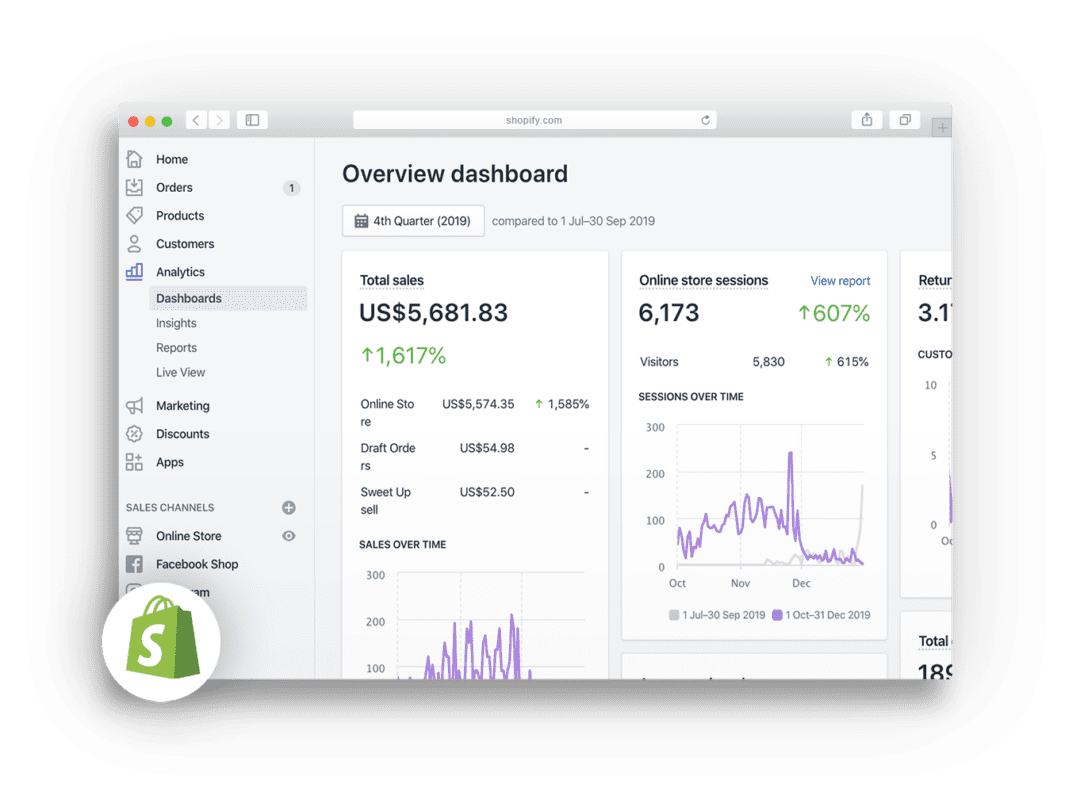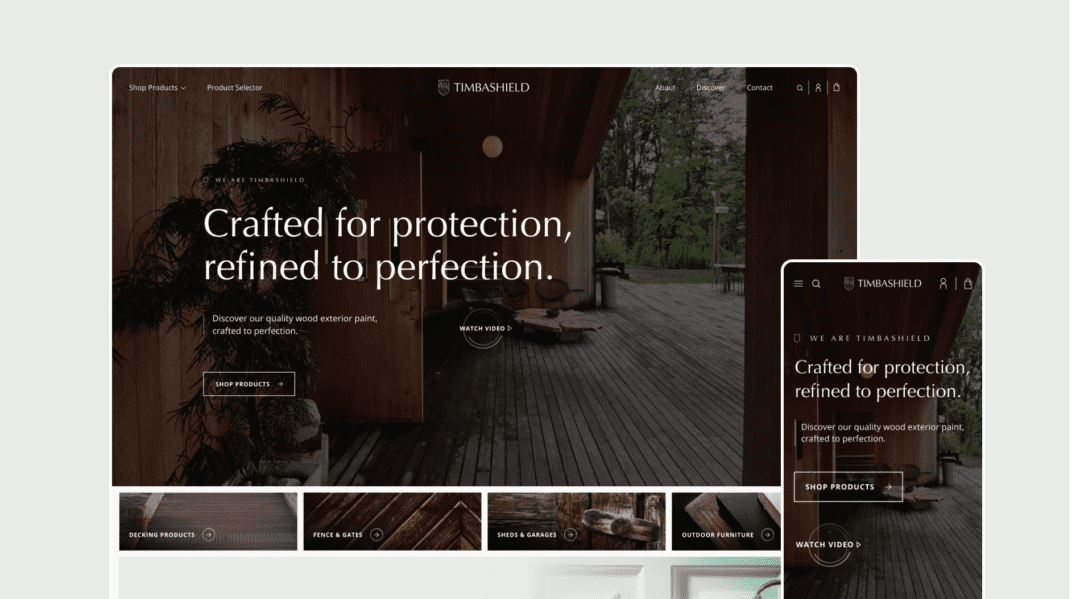Starting the journey of launching an e-commerce store is both exciting and also a little daunting, the digital marketplace offers endless opportunities but also comes with its challenges.
In this blog, we look at ‘The Wisp’ website as a case study. A new site made by its owner who knew there was room for improvement and wanted our advice. They kindly allowed us to review the site, we made a YouTube video about it and now we’re sharing our thoughts here. We’ll highlight some common mistakes that new e-commerce entrepreneurs often make, using The Wisp as an example. To show what works well, we’re comparing it to Neom’s website, which does a great job in these areas.
The Crucial First Seconds in Creating an Unforgettable Entrance
If you imagine the internet as a bustling marketplace and your online store is one of many stalls, each looking for attention – What is the key to standing out? Making an unforgettable first impression. The Wisp’ shows the common hurdle of not immediately making the store’s offerings clear, leading to confusion and potential lost sales.
So, what is the solution? At Strafe, we believe your homepage must clearly show what you sell and express why it matters. Using high-quality images and compelling copy that resonate with your target audience, will ensure that they feel they’ve arrived at the right place. This clarity can significantly increase the chances of visitors sticking around and exploring what you have to offer, Neom’s website shows a great example of how you can do this.

Simplicity in Design – Less is More!
In an attempt to impress, many new e-commerce sites cram too much information onto the homepage, this approach can often backfire and overwhelm visitors. Excessive scrolling elements and clutter distract from the site’s core message and is something to avoid on your new website.
Here at Strafe, we believe in adopting a more minimalist approach. Highlighting your bestsellers or seasonal offers with clean, attractive visuals and concise descriptions, creates a well-organised, uncluttered layout inviting visitors to explore, making a positive shopping experience.

Streamlined User Experience and the Essentials for Clarity
A complicated menu can confuse rather than guide potential new customers. The Wisps’ website underlines the importance of intuitive navigation, you are looking to avoid visitors struggling to locate products of interest due to a cluttered and confusing menu.

A good example and one we like here at Strafe is again the Neom website. They show how streamlining your navigation bar by focusing on categorising products logically, using clear, simple terms is the key to exceptional user experience. A search function can help in quickly directing customers to their most wanted items. A smooth navigation path is a crucial step towards successful conversion.

Optimising for the ‘On-the-Go’ Shopper
Overseeing mobile optimisation can leave out a significant section of your target audience. With a substantial portion of online shopping occurring on mobile devices, ignoring this platform is shutting your doors to a lot of potential customers.
How can you achieve this? Responsive design to ensure your site looks and functions seamlessly across all devices, fast loading times, clickable buttons and readable fonts are non-negotiable for capturing the mobile shopper.

The Importance of CTAs
We talk about the use of CTAs a lot here at Strafe, that is because if used correctly they can make a massive difference to your website and conversions. Vague or poorly placed calls-to-action (CTAs) can leave visitors confused about where to go next. The Wisp website demonstrates great placement of CTAs, however making them clearer will avoid visitor inaction; this is a simple fix by using clearer wording.
Your CTAs should stand out, both visually and textually by using eye-catching, action-oriented language with clarity about what will happen next. Placement is also very important to ensure CTAs are positioned prominently on both product pages and throughout the checkout process.

Visuals and Authenticity – The Trust Builders
Consumers are drawn to authenticity and relatability. Using generic or fake images reduces trust but also fails to get across the unique appeal of the products you are selling.
Investing in high-quality, genuine photography that showcases your products is the key, including user-generated content, such as customer photos and reviews, can also create credibility and add a sense of community around your brand. The example of Neoms’ website is a fantastic example of this.

Educating and Engaging Beyond the Sale
The Wisp case study highlights a missed opportunity in not using the site’s real estate for education and engagement. Rather than just transactional space, your e-commerce site should tell your brand’s story and educate visitors about your products and values.
You can do this by incorporating engaging content, such as blog posts, how-to guides, and videos, that align with your brand ethos and products. This enhances the customer experience whilst boosting SEO and therefore driving more traffic to your site.

Simplifying the Checkout Process
A complicated or lengthy checkout process is guaranteed to increase cart abandonment rates, unnecessary fields and confusing options could deter customers at the final stage of the sales process.
Streamlining the checkout process to include only essential information, offering guest checkout options and clear, simple choices for shipping and payment is the key to avoiding this problem. Here at Strafe, we believe every step towards simplification is a step away from potential cart abandonment.

Final Analysis and Strategies for Achieving E-Commerce Excellence
Our concluding thoughts are that launching an e-commerce venture is a journey with challenges but a lot of great opportunities. By acknowledging and addressing these common mistakes, first-time entrepreneurs can navigate the competitive digital space confidently.
Embracing simplicity, clarity, and user-focused design to create a loyal customer base and taking a strategic, well-informed approach will help to achieve a smoother e-commerce journey for first-time entrepreneurs.




